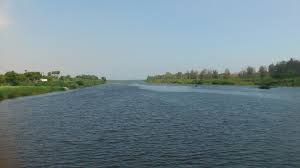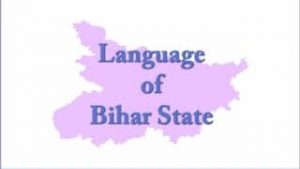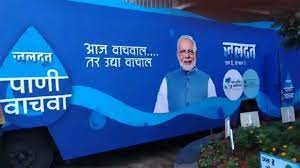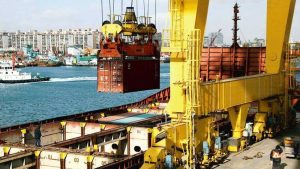Today Current Affairs: 28th September 2022 for UPSC IAS exams, State PSC exams, SSC CGL, State SSC, RRB, Railways, Banking Exam & IBPS, etc
Table of Contents
NavIC:

The Union government is pushing tech giants to make smartphones compatible with its home-grown navigation system within months, worrying the likes of Samsung, Xiaomi and Apple who fear elevated costs and disruptions as the move requires hardware changes.
- In line with Prime Minister Narendra Modi’s drive for self-reliance, India has over the years expanded the use of its regional navigation satellite system called NavIC (Navigation with Indian Constellation).
- The Union government wants to reduce dependence on foreign systems, including the widely used U.S. Global Positioning System (GPS), and says NavIC provides more accurate domestic navigation and that its use would benefit the economy.
- China, the European Union, Japan and Russia have their own global or regional navigation systems to rival GPS.
- Operational since 2018, NavIC’s uptake is minimal; it is mandated in public vehicle location trackers, for example.
- The Indian Regional Navigation Satellite System (IRNSS), with an operational name of NavIC, is an autonomous regional satellite navigation system that provides accurate real-time positioning and timing services.
- It covers India and a region extending 1,500 km around it, with plans for further extension.
Thamirabarani River:

The district administration of Tirunelveli in Tamil Nadu along with Ashoka Trust for Research in Ecology and the Environment (ATREE), a non-profit Organisation, are using a ‘hyper local’ approach called TamiraSES to restore the Thamirabarani River.
- The Thamirabarani is of great importance to southern Tamil Nadu environmentally and historically.
- But it too has suffered, which is why the restoration project has been started.
- While the Thamirabarani landscape, in general, appears water-rich, it faced severe drought in 2016 despite the diverse water storage systems in place.
- Settlements have been on the rise, which has led to the shrinkage of agricultural land and water bodies.
- TamiraSES project is a district level initiative, which aims to restore the Social Ecological Systems of Tamiraparani river riverscape from head-waters to the estuary to enable conditions for native biodiversity to thrive and maintain and enhance multiple ecosystem services to local stakeholders.
- Five social ecological observatories will be set up as part of the first phase of the project.
- These will serve as pilots to scale up from the learnings from these sites.
- The idea is to rejuvenate not just the Thamirabarani but all the water bodies in the riverscape of Tirunelveli.
- The Thamiraparani is the only perennial (continuous flow of water) river in Tamil Nadu.
- This is the shortest river in the state, the Thamirabarani starts in Pothigai hills of the Western Ghats in the Ambasamudram taluk, flows through Tirunelveli and Thoothukudi districts and empties at Korkai (Tirunelveli district) into the Gulf of Mannar (Bay of Bengal). It thus originates and ends in the same state.
- The river supports wildlife such as the Nilgiri marten, slender loris, lion-tailed macaque, white spotted bush frog, galaxy frog, Sri Lankan Atlas moth and the great hornbill.
- Besides the ecosystem services it provides, the river also has historical value for the people of the state.
- It is mentioned extensively in Sangam Era literature.
World Environmental Health Day 2022:

World Environmental Health Day 2022 is observed annually on September 26 to spread awareness globally regarding the health of the environment.
- The central idea behind celebrating this day is that the health of the human race is irrevocably intertwined with the health of the environment.
- The day was first observed by the International Federation of Environmental Health (IFEH) in the year 2011. The main aim is the well-being of people across the globe.
- The IFEH is wholly dedicated to the development and dissemination of knowledge on the protection and subsequent improvement of environmental health.
- The theme for this year is ‘Strengthening Environmental Health Systems for the implementation of the Sustainable Development Goals.’
Surjapuri And Bajjika Dialects:

Bihar Chief Minister Nitish Kumar and Education Minister Prof Chandra Shekhar have asked the state education department to set up academies for the promotion of the Surjapuri and Bajjika dialects on the lines of the Hindi and Urdu academies.
- Surjapuri is spoken mainly in Kishanganj and other parts of Seemanchal in northeastern Bihar, including the districts of Katihar, Purnia and Araria.
- The dialect, a mix of Bangla, Urdu, and Hindi, is also spoken in contiguous parts of West Bengal.
- The name Surjapuri comes from Surjapur pargana, which no longer exists. But there is a toll plaza called Surjapur between Purnia and Kishanganj.
- Bajjika, one of five dialects spoken in Bihar, is a mix of Hindi and Maithili, and is spoken mainly in Vaishali, Muzaffarpur, and parts of Sitamarhi, Sheohar and Samastipur.
- Bajjika is not as well known as other dialects such as Bhojpuri and Maithili.
Renewable Energy And Jobs-Annual Review 2022:

The International Renewable Energy Agency (IRENA) and the International Labour Organization (ILO) released a report titled “Renewable Energy and Jobs-Annual Review 2022”, which says that around 700,000 new jobs were created in the Renewable Energy Sector in just one year.
- The report identified domestic market size, along with labor, as a major factor influencing job growth in the sector.
- The Renewable Energy sector employed 12.7 million people across the world in 2021, up from 12 million in 2020.
Close to two-thirds of all such jobs are in Asia, with China alone accounting for 42 % of the global total. - It is followed by the European Union and Brazil with 10 % each and the United States and India with 7 % each.
- Developed economies received the largest share of investment in the renewable energy field.
- These countries are on their way to achieving a 60 % growth in the clean energy sector by 2022.
- Southeast Asian countries are becoming major Solar Photovoltaic (PV) manufacturing hubs and biofuel producers, while China is the pre-eminent manufacturer and installer of solar PV panels and is creating a growing number of jobs in offshore wind.
- India added more than 10 Gigawatts of solar PV, generating many installation jobs, but remains heavily dependent on imported panels.
- Europe accounts for about 40 % of the world’s wind manufacturing output and is the most important exporter of wind power equipment; it is trying to reconstitute its solar PV manufacturing industry.
- In Africa there are growing job opportunities in decentralized renewables, while in the Americas, Mexico is the leading supplier of wind turbine blades.
- Brazil remains the leading employer in biofuels but is also adding many jobs in wind and solar PV installations.
- The US is beginning to build a domestic industrial base for the budding offshore wind sector.
- Solar energy remained the fastest-growing sector.
- In 2021 it provided 4.3 million jobs — more than a third of the total renewable energy workforce.
- In 2021, a record 132.8 gigawatts of solar PV capacity were installed globally, up from 125.6 GW in 2020.
- China accounted for 53 GW (40 %) of this addition. It was followed by the US, India and Brazil, all of which set new annual records.
- The number of people directly employed in Decentralised Renewable Energy (DRE) in 2021 was more than 80,000 in India (mostly in solar PV), 50,000 each in Kenya and Nigeria, almost 30,000 in Uganda.
- DRE is a system that uses renewable energy to generate, store and distribute power in a localised way.
- The share of women in the DRE workforce is still low, particularly for skilled jobs, the researchers observed.
- Overall, the share of women in DRE was 41 % in Kenya, 37 % in Ethiopia and Nigeria, 28 % in Uganda and 21 % in India.
Jaldoot App:

Union Minister of Rural Development, Shri Giriraj Singh will launch the JALDOOT App.
- Ministry of Rural Development has developed “JALDOOT App” that will be used across the country to capture the water level of selected wells in a village.
- The Jaldoot app will enable Gram Rojgar Sahayak (GRS) to measure the water level of selected wells twice a year (pre-monsoon and post-monsoon).
- In every village, adequate number of measurement locations (2-3) shall need to be selected. These will be representative of the ground water level in that village.
- The app will facilitate panchayats with robust data, which can be further used for better planning of works.
- The ground water data could be utilised as part of the Gram Panchayat Development Plan (GPDP) and Mahatma Gandhi NREGA planning exercises.
- Further, the data can also be used for different kinds of research and other purposes
AVGAS 100 LL:

Union Minister of Petroleum and Natural Gas launched AVGAS 100 LL.
- The launch event hosted by Indian Oil at Hindan Airforce Station witnessed participation by senior officials from Indian Airforce, senior officials from MoPNG and MoCA and officials from Flying Training Organizations (FTOs).
- At present AVGAS 100 LL is completely imported product. The domestic production of AVGAS 100 LL produced by Indian Oil at its Gujarat Refinery will make flying training more affordable in India.
- This product which fuels the aircraft operated by FTOs and Defense forces, is being imported for decades by India.
- Indian Oil’s R&D, Refineries and Marketing teams have achieved this feat of indigenous production and have offered price advantage to the industry.
- AV GAS 100 LL produced by IndianOil’s flagship refinery at Vadodara has been tested and certified by Directorate General of Civil Aviation (DGCA), the statutory body of the Government of India to regulate civil aviation in India.
- It is a higher-octane Aviation fuel meeting the product specifications with superior performance quality standards, as compared to imported grades.
Foreign Trade Policy By Six Months:

The Union Commerce Ministry announced the extension of the existing foreign trade policy by six months.
- The reason behind the development is currency volatility and global uncertainty.
- The ministry said, the geo-political situation is not suitable for long-term foreign trade policy.
- Earlier, the government had extended the due date for the Foreign Trade Policy 2015-20 to September 30, 2022. Currently, fears of a recession in major economies like the US and Europe have escalated a panic among investors.
- Foreign Trade Policy provides a framework for increasing exports of goods and services as well as generation of employment and increasing value addition in the country.
- It focuses to support both the manufacturing and services sectors, with a special emphasis on improving the ease of doing business.
- Earlier this month, Commerce Minister Piyush Goyal held a meeting that focused on export target setting, the new Foreign Trade Policy (FTP) (2022-27), and the strategies and measures to take forward domestic manufacturing and exports.
One Week One Lab:

Union Minister of Science & Technology, Dr. Jitendra Singh, who is also the Vice President of CSIR, announces “One Week One Lab” campaign.
- Objective of this campaign is to showcase the technological breakthroughs and innovations in each of the 37 CSIR laboratories/institutes spread across the country.
- The Council of Scientific and Industrial Research (CSIR), was established by the Government of India in 1942 as an autonomous body that has emerged as the largest research and development organisation in India.
Fund Of Funds For Startups:

Fund of Funds for Startups (FFS), launched under Startup India initiative in 2016 by the Prime Minister Narendra Modi has committed Rs. 7,385 crore to 88 Alternative Investment Funds (AIFs) as of 24th September 2022.
- These AIFs in turn have invested Rs. 11,206 crore in 720 startups.
- FFS has been playing a monumental role in mobilizing domestic capital in Indian startup ecosystem.
- FFS was announced with a corpus of Rs. 10,000 crore.
- The corpus is to be built up over 14th and 15th Finance Commission Cycles (FY 2016-2020 and FY 2021-2025) through budgetary support by Department for Promotion of Industry and Internal Trade (DPIIT), Ministry of Commerce & Industry, Government of India.
- Under FFS, support is extended to SEBI registered Alternative Investment Funds (AIFs), which in turn invest in startups.
- Furthermore, Small Industries Development Bank of India (SIDBI) which is responsible for operationalising the Scheme has undertaken a series of reforms recently to expedite the drawdowns to enable AIFs assisted under FFS to avail accelerated drawdowns.




